Getting an airdrop through Gitcoin donations is like opening a blind box. To help you make a better judgment, Biteye analyzed the airdrop rules of Optimism, Dmail, Namada, NIM Network, and Celestia.
They all airdrop to addresses that have participated in Gitcoin donations. The rules are slightly different. Please see the comparison below.
Rule 1: Gitcoin donors can get airdrops directly, regardless of rounds and amounts
Optimism is Ethereum Layer2. In the first round of airdrops, 5% of the OP supply was distributed to 248,699 addresses, including Gitcoin donors.
The main requirement is that on-chain donations have been made through Gitcoin on L1 before the snapshot. Regardless of the round and amount, each address can get 555.92 OPs, which is about 800 US dollars based on the opening price, which is very considerable.
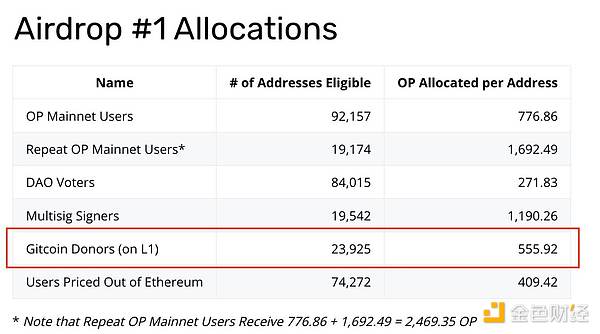
Rule 2: Gitcoin donors can get tokens directly, with restrictions on rounds and amounts
Dmail provides encrypted email services and airdropped 7.5 million DMAIL (3.75% of the total supply) in the first quarter.
A total of 37,500 DMAIL will be airdropped to all addresses that donated more than $5 to Dmail in the past two rounds of Gitcoin donations. If you donate ETH, it will be converted into US dollars based on the exchange rate at the time (US$2268.26/ETH).
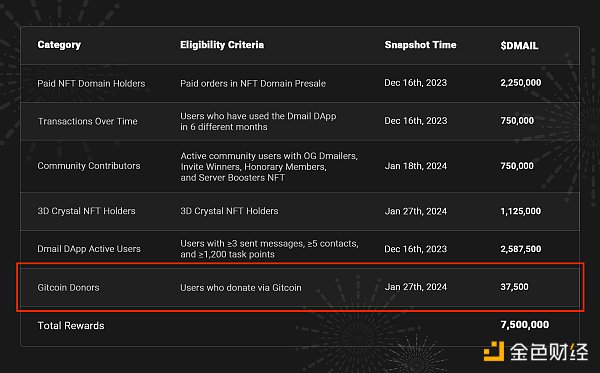
Rule 3: Gitcoin donors can get tokens directly, limit the rounds, and sort the amounts
Namada is the L1 for inter-chain asset equity proof. In the RPGF Drop, 65 million NAM (6.5% of the total supply) was airdropped, of which 26% was given to donors of the ZK Tech and Advocacy projects Gitcoin.
It is required to donate to specific projects in specific rounds, and the total amount of donations in each round will be ranked. The lowest ranking interval can get 71 NAM.
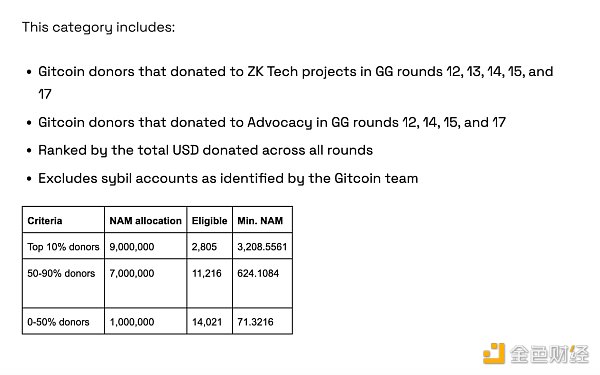
Rule 4: Gitcoin donors can get tokens directly, and the donation type is restricted
NIM Network is an AI game blockchain based on Dymension, which airdropped 90 million NYMs (9% of the total supply).
The project party airdropped to 7,599 wallets that donated to specific open games, infrastructure, and open source software projects on Gitcoin, and the specific proportion is unknown.

Rule 5: Use Gitcoin donations as scoring weight
Celestia is the first modular blockchain network, with a Genesis airdrop of 60 million TIA (6% of the total supply), of which 1/3 was given to early active Ethereum Rollups.
When measuring the user's on-chain activity level, the official weights some on-chain behaviors and generates a score for each address that is linked to the number of airdropped tokens (out of 23 points), and Gitcoin donors can get 3 points.
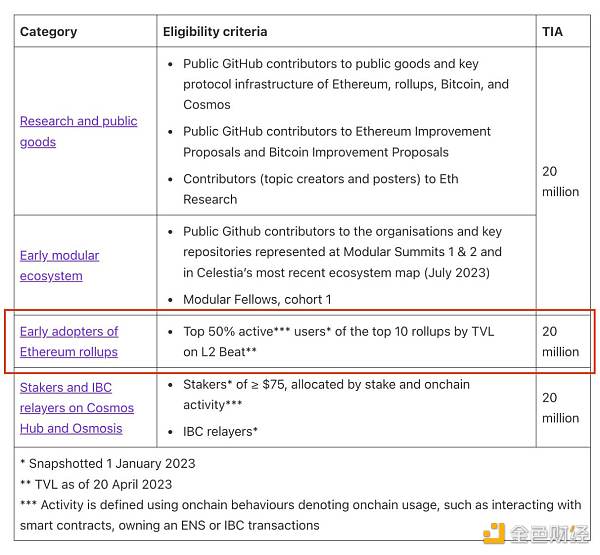
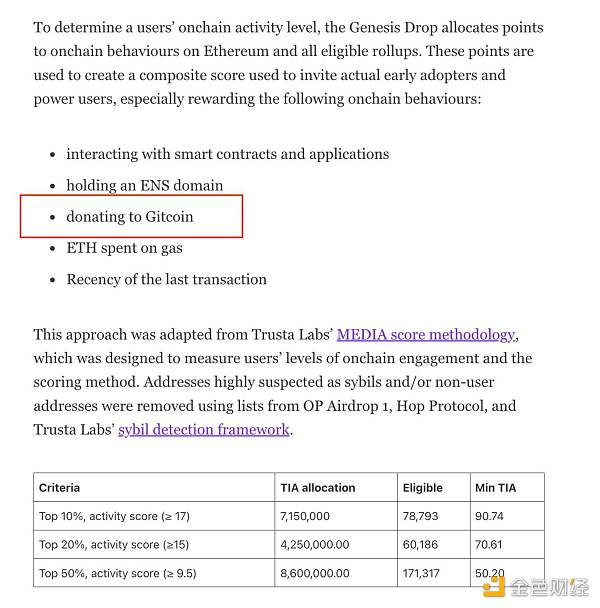
Summary
Gitcoin donation is a good on-chain interaction behavior, and there is even a chance of getting airdrops from high-quality projects, making a small investment for a big return.
It is worth noting that the entire coin-making industry is becoming more and more competitive, and so is Gitcoin donations. The airdrop income is not as good as before. In the past, maybe just donating was enough, but now it depends on the amount, donation project, donation round, etc. It is more of a "weight" of the project airdrop.
 Kikyo
Kikyo
 Kikyo
Kikyo Coinlive
Coinlive  Others
Others Tristan
Tristan Coinlive
Coinlive  Beincrypto
Beincrypto Nell
Nell Nell
Nell Nulltx
Nulltx Cointelegraph
Cointelegraph